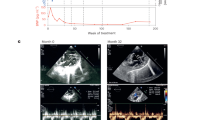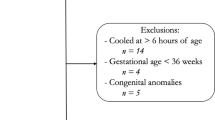Abstract
ABSTRACT: This study examines the effects of severe head injury in children on whole body energy expenditure and the mediators that influence this. One hundred five serial measurements of whole body energy expenditure and plasma adrenaline, triiodothyronine, glucagon, cortisol, insulin, and growth hormone concentrations were made in 18 children aged 2–15 y receiving neurointensive care for severe head injury. Energy expenditure was measured using indirect calorimetry by a modified Douglas bag technique, and hormones were measured by RIA or radioenzymatic assay. Energy expenditure varied markedly between and within children (mean 97% of predicted, range 60–137%) and was significantly lower in the four children with a poor outcome (p = 0.03). Within each child there were statistically significant positive relationships between energy expenditure and adrenaline (p < 0.0001), triiodothyronine (p < 0.0001), and glucagon (p < 0.0001). However, there was evidence that the effect of adrenaline on energy expenditure was attenuated. This may be due to the effects of the cerebral trauma itself on central nervous influences on energy expenditure, to interactions between hormones, or to a global impairment of O2 utilization by the body's tissues.
Similar content being viewed by others
Log in or create a free account to read this content
Gain free access to this article, as well as selected content from this journal and more on nature.com
or
Author information
Authors and Affiliations
Rights and permissions
About this article
Cite this article
Matthews, D., Aynsley-Green, A., Matthews, J. et al. The Effect of Severe Head Injury on Whole Body Energy Expenditure and Its Possible Hormonal Mediators in Children. Pediatr Res 37, 409–417 (1995). https://doi.org/10.1203/00006450-199504000-00005
Received:
Accepted:
Issue date:
DOI: https://doi.org/10.1203/00006450-199504000-00005



